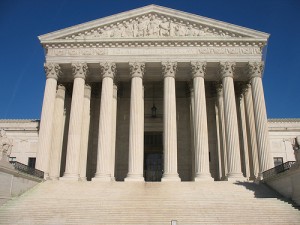In its first opinion of the term in Mt. Lemmon Fire District v. Guido the Supreme Court ruled 8-0 that the federal Age Discrimination in Employment Act (ADEA) applies to state and local government employers with less than 20 employees. The State and Local Legal Center (SLLC) filed an amicus brief arguing that it should not apply. State and local governments often rely on small special districts to provide services they don’t provide.
John Guido was 46 and Dennis Rankin was 54 when they were laid off by the Mount Lemmon Fire District. They claim they were terminated because of their age in violation of the ADEA. They were the oldest of the district’s 11 employees.
The fire district argued that the ADEA does not apply to it because it employs fewer than 20 people. The Ninth Circuit disagreed.
The term “employer” is defined in the ADEA as a “person engaged in an industry affecting commerce who has 20 or more employees.” The definition goes on to say “[t]he term also means (1) any agent of such a person, and (2) a State or political subdivision of a State.” Continue reading




